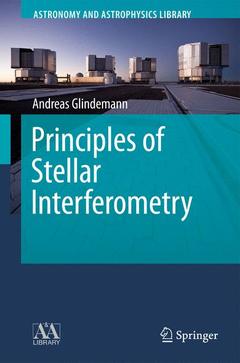Principles of Stellar Interferometry, 2011 Astronomy and Astrophysics Library Series
Auteur : Glindemann Andreas

Over the last decade, stellar interferometry has developed from a specialist tool to a mainstream observing technique, attracting scientists whose research benefits from milliarcsecond angular resolution. Stellar interferometry has become part of the astronomer?s toolbox, complementing single-telescope observations by providing unique capabilities that will advance astronomical research.
This carefully written book is intended to provide a solid understanding of the principles of stellar interferometry to students starting an astronomical research project in this field or to develop instruments and to astronomers using interferometry but who are not interferometrists per se.
Illustrated by excellent drawings and calculated graphs
- the imaging process in stellar interferometers is explained starting from first principles on light propagation and diffraction,
- wave propagation through turbulence is described in detail using Kolmogorov statistics,
- the impact of turbulence on the imaging process is discussed both for single telescopes and for interferometers,
- instrumental techniques like beam combination and array layout are described, and the requirements for delay lines are derived,
- visibility measurements (modulus and phase) through turbulence are analyzed and limitations are quantified,
- correction methods (fringe tracking and adaptive optics) are presented, discussing closed loop operation with a dual feed system.
Date de parution : 01-2011
Ouvrage de 346 p.
15.5x23.5 cm
Thème de Principles of Stellar Interferometry :
Mots-clés :
Adaptive Optics; Aperture synthesis; Astrometry; Beam combination; Fringe tracking; Heterodyne interferometry; Imaging Through Turbulence; Light diffraction; Light propagation; Multi-conjugate adaptive optics; Phase Referenced Imaging; Space interferometers; Speckle interferometry; Stellar Interferometry; Very High Angular Resolution; Very large telescope interferometers; Wavefront reconstruction; Wavefront sensing



